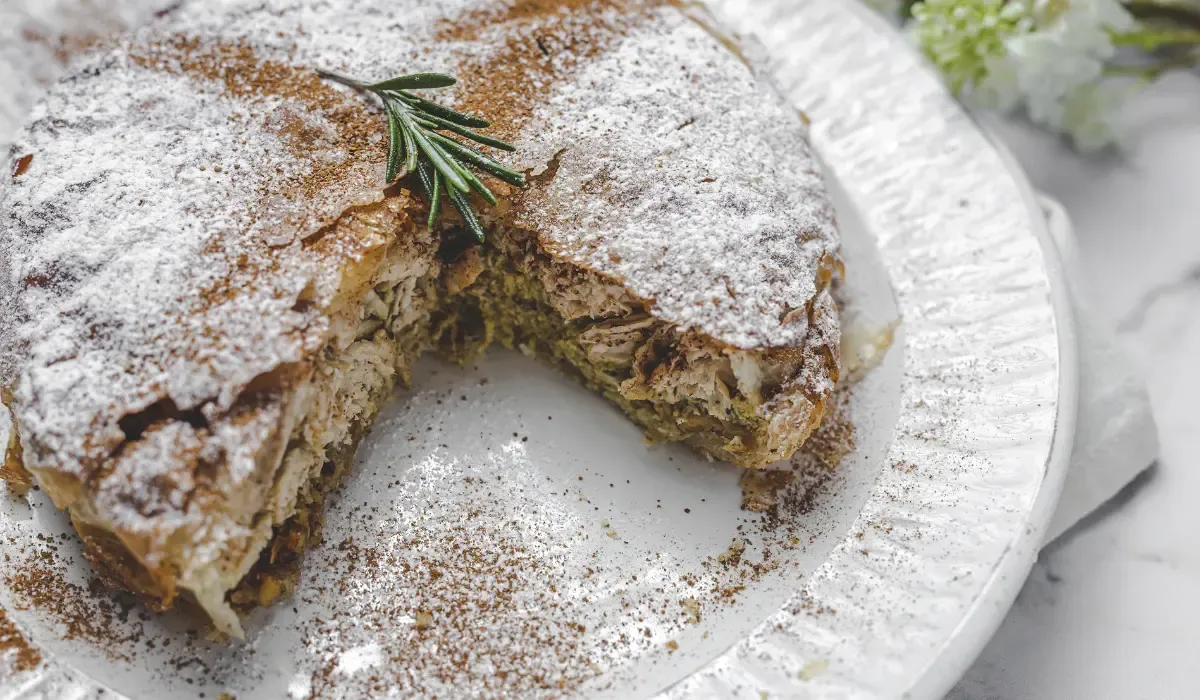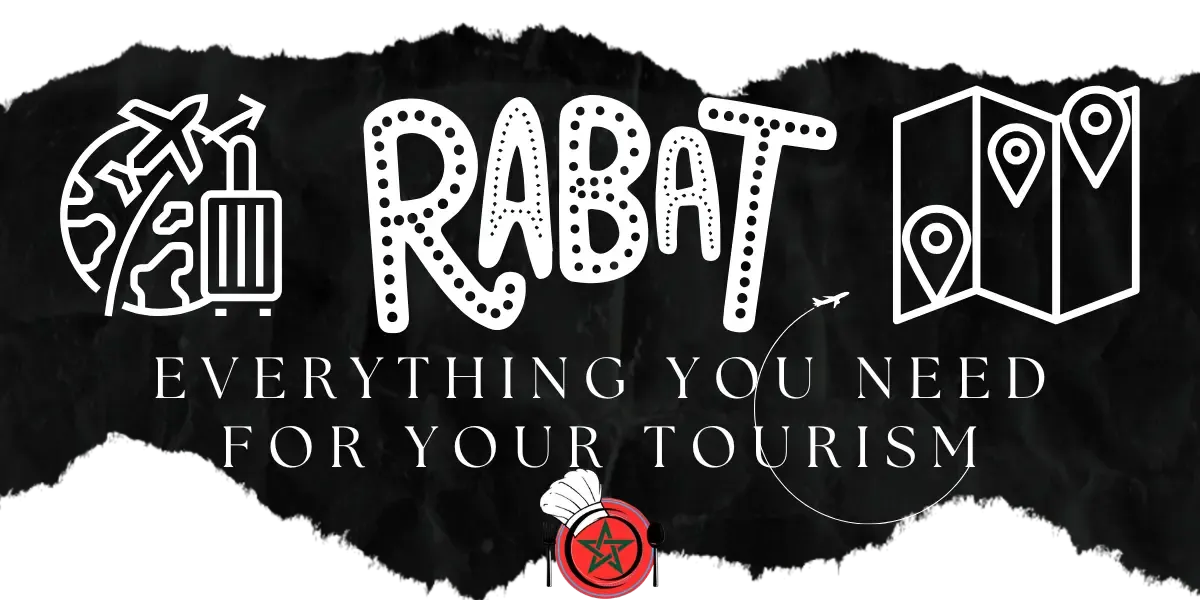Rabat: Culinary & Cultural Journey
Discover the flavors and heritage of Morocco's capital
Gastronomic Delights

Must-Try Specialties
- Seafood Pastilla - Flaky pastry with spiced fish
- Harira - Traditional soup with lentils and chickpeas
- M'semen - Square-shaped semolina pancakes
- R'ziza - Rabat-style vermicelli with milk
- Maakouda - Potato fritters street food
- Sellou - Sweet energy dessert with sesame
Cultural Treasures

UNESCO Heritage Sites
Explore Rabat's rich history through its remarkable landmarks...
Top Attractions
- Hassan Tower - 12th century minaret
- Kasbah of the Udayas - Andalusian-style fortress
- Chellah - Roman and Islamic ruins
- Mohammed VI Museum - Modern art museum
- Andalusian Gardens - Historic botanical garden
- Rabat Medina - Traditional walled city
City Map
Rabat is the capital city of Morocco, located on the Atlantic coast at the mouth of the Bou Regreg River. It is one of the four imperial cities of Morocco, along with Fez, Marrakesh, and Meknes. Rabat has a rich history dating back to the Phoenicians, who established a settlement there in the 8th century BC.
Modern City

Modernity in Infrastructure
Rabat is a modern city with a vibrant cultural scene. It is home to a number of museums, including the Mohammed VI Museum of Modern and Contemporary Art, the Museum of Moroccan Arts, and the Chellah Archaeological Site. The city is also a popular tourist destination, known for its beautiful beaches, historic landmarks, and delicious cuisine.
Modern Kitchens in Rabat

Contemporary Kitchen Designs
Rabat's kitchens beautifully blend modern aesthetics with Moroccan heritage. Key features include:
- European-style designs with Moroccan accents
- High-gloss cabinets with traditional zellige tile backsplashes
- Smart storage solutions adapted to Moroccan cooking needs
- Premium materials like quartz countertops with Berber patterns
The city offers numerous high-end kitchen showrooms and skilled craftsmen who can customize modern kitchens while preserving local design elements.
Rabat's Famous Dishes
Discover the authentic flavors of Rabat through its most iconic culinary creations

Moroccan Tagine
Slow-cooked savory stew made with meat, poultry or fish combined with vegetables or fruits, cooked in a traditional clay pot.
View Recipes →
Couscous
Steamed semolina grains served with vegetables and meat, a Friday staple in Moroccan households throughout Rabat.
View Recipes →
Msemen
Square-shaped Moroccan pancakes, often served with honey or amlou for breakfast, found in street markets across Rabat.
View Recipe →
Brochettes
Grilled meat skewers, typically made with lamb or beef, served with bread and harissa, a popular street food in Rabat.
View Recipe →
Pastilla
Sweet and savory pie made with warqa dough, pigeon meat, almonds, and cinnamon, a Rabat culinary masterpiece.
View Recipes →
Harira
Hearty soup made with tomatoes, lentils, chickpeas, and lamb, traditionally served to break the fast during Ramadan in Rabat.
View Recipe →
Rabat, the capital of Morocco, is a city with a rich history and culture. This is reflected in its kitchen, which is a delicious fusion of Moroccan, Arabic, and Mediterranean flavors.
The city is home to a number of traditional Moroccan restaurants, as well as more modern eateries serving international kitchen.
Moroccan kitchen is known for its use of spices, fresh ingredients, and slow-cooking methods. Some of the most common spices used in Moroccan kitchen include cumin, coriander, turmeric, saffron, and cinnamon. These spices are used to create a variety of flavorful dishes, including tagines, couscous, and harira.
Rabat is a great place to experience Moroccan cuisine. The city is home to a variety of restaurants that serve traditional Moroccan dishes, as well as more modern eateries that offer a fusion of Moroccan and international flavors.

The pleasure of walking the streets of any city in the world is not complete without eating. The pleasure is even greater if the food is light and cheap, and it can be eaten while walking away from the formal atmosphere of restaurants.
In the streets and markets of the Moroccan capital, as is the case in many cities around the world that see a lot of movement, carts spread that provide light and different meals at simple prices ranging from a quarter of a dollar to one dollar at most.
Light, quick to prepare, and cheap, these are the three basic qualities that are available in "street food", which is popular with many people, including even tourists, who seek to discover those simple popular dishes.
Rabat's Famous Street Food
Discover the Street Food of Rabat City

Maqouda
It is a well-known Moroccan dish. Its preparation does not require a lot of time and effort, nor does it require many ingredients. It can be eaten alone or alongside other dishes such as fish and salads. The main ingredient of this dish is boiled and mashed potatoes, to which spices, garlic, parsley, yeast, and eggs are added. Balls are formed from them and rolled in flour before being fried in oil.
View Recipes →
Sikook
"Sicok" is a cold Moroccan snack that can be found ready-made in Rabat's market, known as Souika. This dish is based mainly on couscous, whether barley couscous or corn couscous, which is steamed in several stages after moistening it with water and adding salt and oil to it. After the couscous is cooked, it is left until it cools and then milk is added to it.
View Recipes →
Rghayif Shahma
This is an ideal meal for those who love fat, as it is pancakes stuffed with lard and onions, and is often eaten with tea. Lard pies are prepared in three stages, where the pies are prepared with flour, water and salt before forming small balls from them that are spread with oil and left for a while. In parallel, the filling is prepared, which is pieces of beef or sheep lard to which onions, parsley and spices are added. In the final stage, the pancake balls are filled with a little of this filling before being cooked on a hot frying pan.
View Recipe →
Sfenj
Are common pies in morocco. The origin of the word sponge is due to the method of cooking it, which involves frying it in oil. As a result of the interaction of the yeasts and the materials that make up the dough, the pie absorbs the oil, creating large holes on the inside similar to a sponge. In Maghreb customs, it can be eaten daily, and it is sold in stores specializing in making it, along with other pies according to the country, where it is eaten hot with coffee or tea and sweetened with sugar or honey.
View Recipe →
Tayeb wa Hari
As its name suggests, the “Taayeb wa Hari” dish is cooked well to the point of melting. It consists of fava beans and chickpeas boiled in salt water, to which, after they are cooked, cumin and hot pepper are added.
View Recipes →
Sugarcane Juice
As its name suggests, the “Taayeb wa Hari” dish is cooked well to the point of melting. It consists of fava beans and chickpeas boiled in salt water, to which, after they are cooked, cumin and hot pepper are added.
View Recipe →
Mille feuilles
As its name suggests, the “Taayeb wa Hari” dish is cooked well to the point of melting. It consists of fava beans and chickpeas boiled in salt water, to which, after they are cooked, cumin and hot pepper are added.
View Recipes →SOME TIPS FOR EXPERIENCING MOROCCAN KITCHEN IN RABAT:
- Visit a traditional Moroccan restaurant in rabat and order a tagine. This is a must-try dish that is sure to please.
- Try some of the local street food. There are many great options to choose from, such as msemen, pastilla, and harira.
- Take a cooking class. This is a great way to learn about Moroccan cuisine and how to make some of your favorite dishes at home.
TOURISM IN RABAT
Rabat is a vibrant and exciting city that has something to offer everyone. Whether you are interested in history, culture, or cuisine, you are sure to enjoy your visit.
Things to Do
Discover the Tourist attractions in Rabat

Chellah Archaeological Site
The Chellah Archaeological Site is a Roman necropolis that was built in the 1st century AD. It is a fascinating place to learn about the history of Rabat.
Know more +
The Hassan Tower
The Hassan Tower is a famous historical landmark in Rabat, an iconic minaret of an incomplete 12th-century mosque, symbolizing Morocco's rich architectural heritage.
Know more +
The Mausoleum
The Mausoleum of Mohammed V and Hassan II is an architectural masterpiece in Rabat, housing the tombs of King Mohammed V (the father of independence) and his son, King Hassan II. Adorned with exquisite Islamic art and carved marble, it reflects Morocco's royal heritage.
Know more +
The Bou Regreg River
The Bou Regreg River is a beautiful river that flows through Rabat. It is a great place to relax and enjoy the scenery.
Know more +
the Kasbah des Oudayas
The Kasbah des Oudayas is a UNESCO World Heritage Site that was built in the 12th century. It is a beautiful example of Moroccan architecture.
Know more +GEOGRAPHY & LOCATION
Rabat is strategically located on the Atlantic coast at the mouth of the Bou Regreg River, opposite the city of Salé. As the capital of Morocco, it sits in the northwestern part of the country within the Rabat-Salé-Kénitra region.
- Coordinates: 34°02′N 6°51′W
- Area: 118 km² (46 sq mi)
- Elevation: 75 m (246 ft)
DEMOGRAPHICS
Rabat has a population of approximately 1.8 million in its metropolitan area, making it Morocco's second largest urban area after Casablanca.
- Urban population: 1.2 million
- Metro population: 1.8 million
- Population density: 5,200/km²
- Growth rate: 1.8% annually
CLIMATE & WEATHER
Rabat enjoys a Mediterranean climate (Köppen Csa) with:
- Summer (Jun-Sep): 22-28°C (72-82°F), dry
- Winter (Dec-Feb): 8-17°C (46-63°F), mild and wet
- Annual rainfall: 560 mm (22 in)
- Sunshine: 2,900 hours/year
The best time to visit is spring (April-May) when temperatures are pleasant and flowers are in bloom.
CULTURE & LANGUAGES
As Morocco's capital, Rabat is a cultural melting pot where tradition meets modernity.
- Official language: Arabic (Moroccan Darija)
- Commonly spoken: French (administrative/business)
- English: Increasingly spoken in tourist areas
- UNESCO sites: Modern Capital and Historic City (2012)
ECONOMY & CURRENCY
Rabat is Morocco's political and administrative center with a growing economy.
- Currency: Moroccan Dirham (MAD)
- Exchange rate: ~10 MAD = 1 USD (varies)
- Key sectors: Government, finance, IT, tourism
- GDP per capita: $8,900 (higher than national average)
TRANSPORTATION
Rabat has a modern and efficient transportation network:
- Rabat-Salé Airport (RBA): 10km from city center
- Rabat-Ville Train Station: High-speed connections to Casablanca (1hr) and Tangier (2hrs)
- Tramway: 2 lines covering 22km with 31 stations
- Public buses: Extensive network throughout the city
- Taxis: Petit taxis (city) and grand taxis (intercity)
Key Highlights of Rabat:
Political center of Morocco with royal palaces and government institutions
Beautiful Atlantic coastline with clean beaches
Rich historical heritage including the Kasbah of the Udayas
Green city with numerous parks and gardens













%20(1).webp)
.webp)


.webp)

